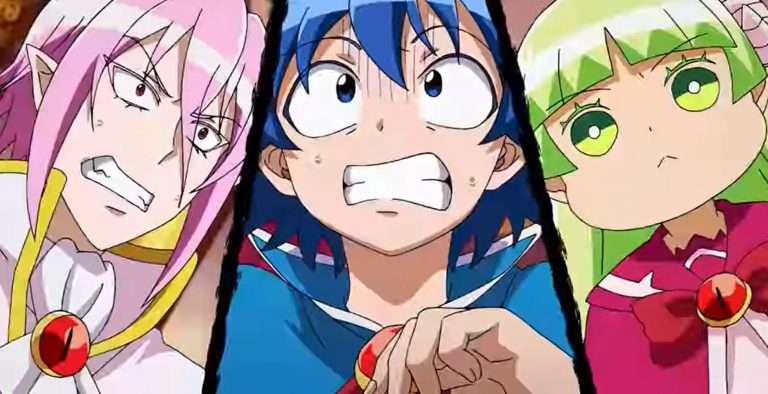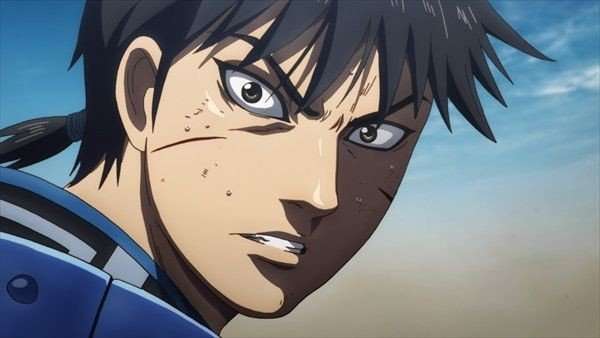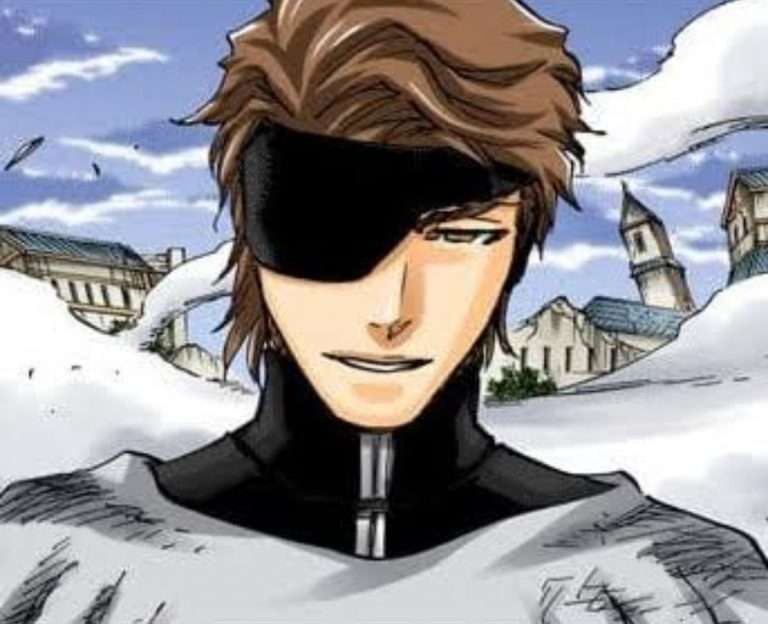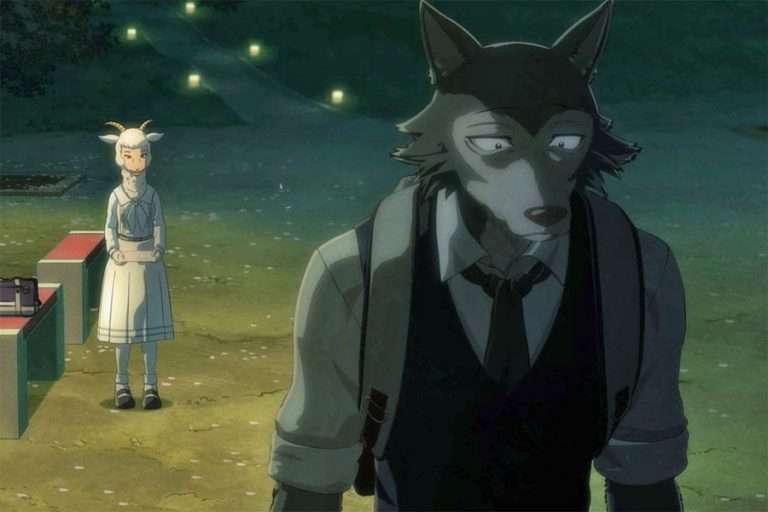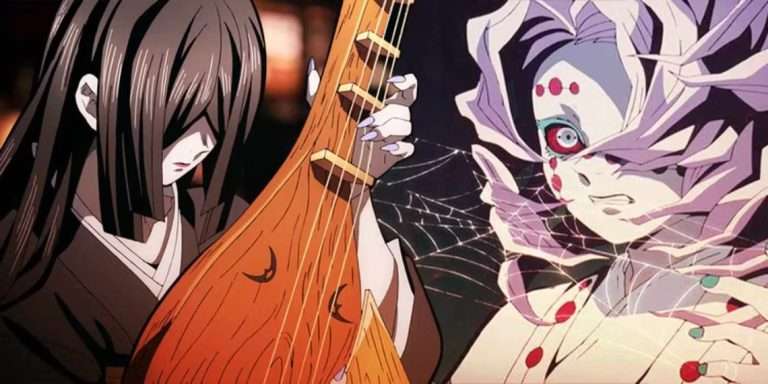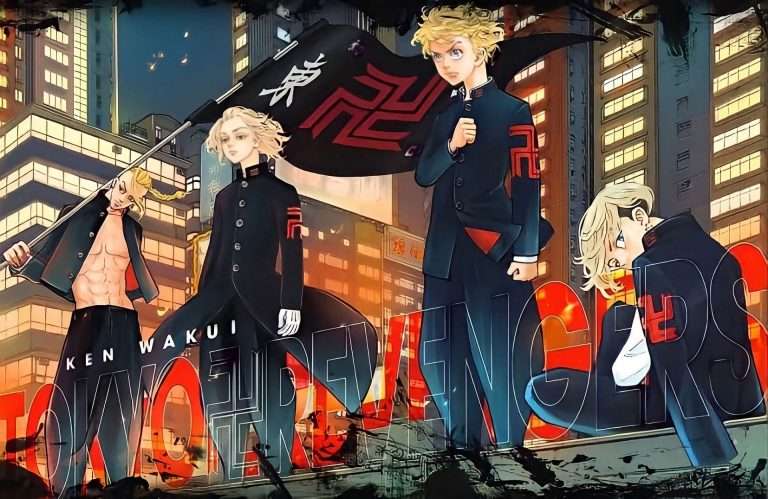Difference Between Manga and Anime: Exploring the Contrast
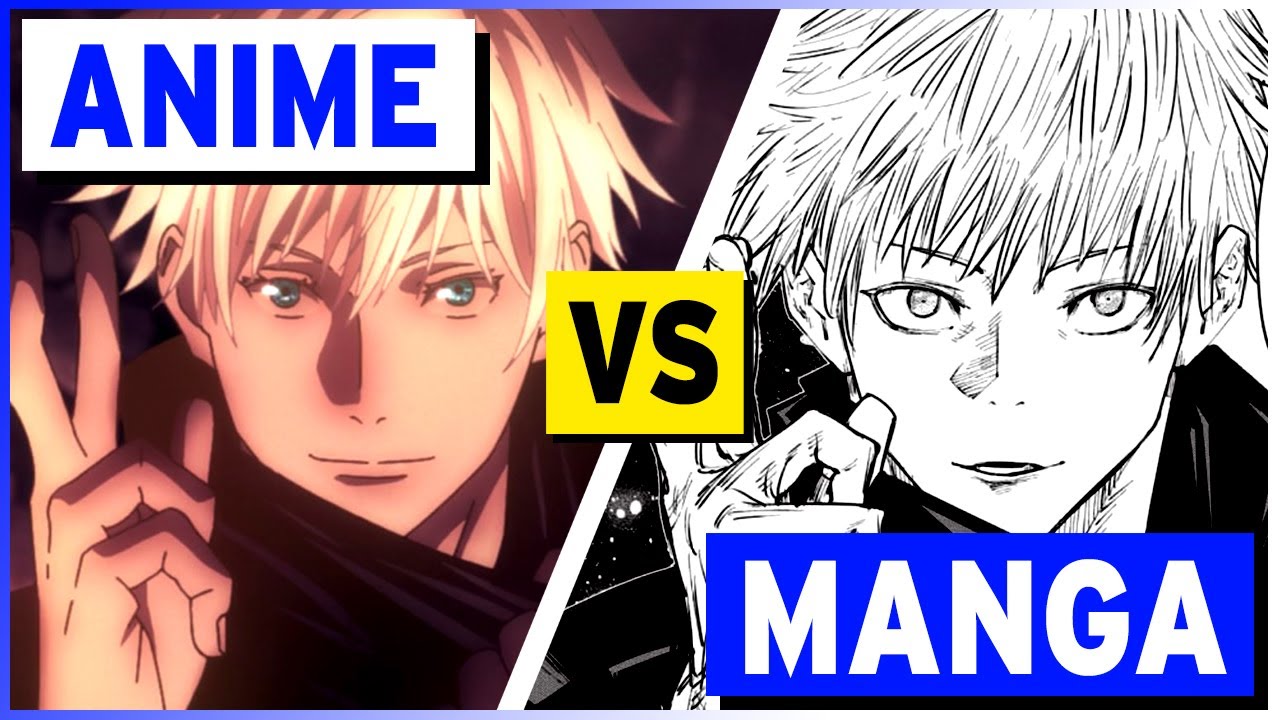
Table of Contents
Distinctions: Manga And Anime
The two finest Japanese media for high-quality amusement are manga and anime. They are closely connected and share many fundamentals. Those forms also differ from one another and diverge in several ways. There aren’t many attempts in the article to define and distinguish manga from anime via globally recognized creative forms that use nature as an attention-grabbing element. Japanese pop culture has undoubtedly and undoubtedly wormed its way into the hearts and minds of many people worldwide, whether they are new to manga and anime or are longtime fans.

1. Artistic Expressions
Many people worldwide like manga and anime, two of the most popular Japanese subcultures of entertainment, and many devote half of their life to making these works of art. Both media convey somewhat distinct artistic styles, share a common history, and frequently adapt comparable tales. Anime and manga are actually the two most seductive subcultures. We have to take a close look at each and make a distinction between the little variations in style or the way that they best represent creativity. Our goal was to understand the visual tales from the thesis and how the panel arrangement, character designs, and visual storytelling were done.
Distinctive Panel Layouts
Panel arrangement influences the reader’s experience throughout the narrative and sets the reading tempo. Through connected, well-spaced panels of variable lengths as well as their diverse physical looks, it generates motion and a rhythm. Manga is comparatively steady and holds the story together with minimal animation while evoking strong feelings. However, if you watch the anime, you’ll notice that it has very great camera angles and seamless transitions that really serve to bring the scenario to life. As the scene shifts from panel to screen, techniques like panning and zooming to maximize dramatic effect open up opportunities for a more cinematic story in the translation.
Mesmerizing Character Designs
Character layout, like the maximum of the opposite intangibles in symbolism and subject matters within the narrative, gives a visual connotation to the imagined standards and motifs in manga and anime. Manga and anime characters are designed for the imagination to plug into the placing of the tale, however by making the characters down to the very last element, besides the voice and motion, readers can sink themselves even deeper into the placing of the tale. From over-the-top expressions to intricate costume portions, manga-ka creativity spills over into the character designs themselves. The staggering shade and first-class animation make individual designs every other class of its very own in anime.
On television, the gestures and facial expressions enliven the characters on the screen with a character and lifestyles. Regularly studios would bring about “professional” artists to make it so that the characters visually and emotionally connected with the viewer.
Visual Storytelling Techniques
While both manga and anime have serious visual storytelling, each applies a special style that may often serve as an attention-grabber for the readers or the viewers. The feeling and setting within the manga are passed by how illustrators structure every panel, its pacing, and visible cues. The ability of a manga to create feelings through pictures only is amazing, whether a reader is only reading the silent panels or over-action scenes.
Anime has the very potential of animation to bring up stories, brimmed with rich details, while the subject matter is placed on the total opposite side. Meanwhile, anime presents full worlds of awe and fun in the most detailed way possible through voice acting, sound design, and animation. The director himself indulges in making countless adventures to amplify the border of the genre, which will draw the attention of the viewer by pleasing the uses of different, meaner, ways of storytelling, full of symbols, and presenting the visuals in a surrealistic way.
This research has allowed developing a much deeper respect for the elaborated material of both manga and anime and respect for their way of creating and the creativity that they kindle and evoke.
2. Pacing and Storytelling
Indeed, even while the two media have comparative starting points and oftentimes adjust similar topics, they vary in the manner in which they pace and foster their storylines. To reveal insight into the strategies every medium proposes to spellbind and intrigue watchers, we will dissect the unique difference between manga and anime regarding pacing and narrating in this examination in terms of pacing and storytelling in this research.
Manga’s Pacing Systems
Since manga is a static medium, how the boards connect decides how rapidly the story moves along. The pacing of manga is now and again more deliberate and controlled because each page is meticulously made by the mangaka (manga craftsman). Manga boards give perusers the chance to wait over significant occasions, require in-minute subtleties, and relish the sentiments that the characters depicted. Due to the smart pacing, perusers might pick their speed and become charmed in the account.
Anime’s Way to Deal with Pacing
Anime, then again, utilizes timing, music, and movement to establish the rhythm. Anime can give watchers a more powerful and drawing-in experience with the fuse of movement, voice acting, and music. Anime can make strain, stir sentiments, and advance the plot in an outwardly enthralling manner by utilizing realistic gadgets including camera points, changes, and exchange pace.
Since anime needs to keep watchers intrigued and engaged, the speed is much of the time quicker. Whether it’s through the vigorous liveliness of anime or the smart board game plan of manga, the two media flourish at making fascinating stories that lastingly affect watchers from one side of the planet to the other.
3. Character Improvement
Character improvement is essential to narrating because it gives stories imperativeness and attracts audience members. Two famous Japanese diversions kinds, manga, and anime, utilize their extraordinary gifts to make interesting person curves. This blog looks at the unpretentious qualifications in character advancement among manga and anime, zeroing in on the impacts of pacing, filler episodes, and visual signs.

The Catch-22 of Pacing
The manga’s pacing oftentimes relies heavily on how rapidly the peruser peruses, which makes character improvement all the more personally and painstakingly investigated. Perusers can wait over boards, taking in every component of a person’s excursion and fostering areas of strength for a bond. Then again, screen time decides the mood of anime, which brings about consolidated character circular segments and sometimes forfeits profundity for curtness. We figure out how characters are etched at various rhythms in manga and anime by investigating the nuances of speed.
The Episodes
Normal in anime, filler episodes can help or damage character advancement. They offer opportunities for side storylines and more person advancement, yet they likewise oftentimes deter the essential account stream and hinder character improvement. Filler is more uncommon in the manga, which makes it conceivable to focus all the more firmly on character circular segments without obstructing the story. Inspecting the capability of filler episodes uncovers the almost negligible difference that should be drawn between propelling person development and safeguarding story energy.
Visual Signs
In both manga and anime, visual signs are significant to character advancement since they form’s characters and feelings. Manga utilizes emotive person plans and careful craftsmanship to depict unpretentious subtleties in still pictures, passing on watchers to hypothesize about the inspirations and sensations of the characters. Anime, then again, utilizes voice acting, films, and a soundtrack to upgrade character portrayals and rejuvenate the story. We find how manga and anime provide their characters with a feeling of authenticity by dissecting the meaning of visual signs.
4. World-Building
The art of world-building is fundamental to narrating in the two media, whether it be on the bustling roads of modern urban areas or in the enchanted woods of puzzling districts. Manga and anime, in any case, make these vivid universes in various ways, which altogether affects the story experience. We’ll investigate the dissimilar techniques utilized by manga and anime to make mind boggling and convincing universes in this examination.
The Specialty of Setting the Stage
The area capabilities as the material on which the plot is painted in both manga and anime. Manga in some cases utilizes elaborate foundation plans and finely point by point representations to make the state of mind of a particular area. Manga specialists meticulously develop each board to inspire a sensation of spot and environment, whether it is the extensive fields of a dystopian no man’s land or the warm insides of an enchanting country motel.
Conversely, anime utilizes movement to rejuvenate these settings and brings watchers into the story’s universe using sound planning, lighting, and scenery workmanship. Anime chiefs utilize both visual and sound signs to produce an instinctive feeling of spot, going from clearing ethereal vistas that portray the loftiness of a bustling city to hint close-ups that uncover the secret insider facts of a detached woodland.
Manga’s Multi-layered Universes
Manga has an exceptional capacity to inspect a great many societies and customs by integrating whimsical perspectives into certifiable shows as motivation. Manga creators capably remember social subtleties for their works, improving the world-building process, whether it’s the intricate habits of a primitive samurai society or the beautiful celebrations of a modern cyberpunk city.
Manga takes perusers to universes loaded with authenticity and intricacy by giving close consideration to subtleties in character configuration, clothing, language, and design. Manga empowers more prominent mindfulness and enthusiasm for the rich variety of the human experience by engaging watchers in the customs and customs of numerous countries.
Anime’s Dynamic Domains Moving
Through unique liveliness, anime upgrades the vivid force of world-building and gives made up domains a clear renewed perspective. Anime takes watchers to energetic, unique universes with clear developments, emotive person liveliness, and dynamic camera work.
From the bustling roads of a bustling city to the serene magnificence of a tranquil open country, anime utilizes the visual and aural characteristics of the medium to make vivid, inventive universes that provoke the curiosity of watchers. Anime chiefs make vivid universes that wait with watchers long after the screen goes clear by using tone, lighting, music, and audio effects.
Laying out Account Rules
The making of standards and guidelines that control the elements of an imaginary universe is crucial for great world-building. Manga creators are allowed to investigate the intricacies of their reality exhaustively, carefully making folklore, legend, and social designs that impact the plot.
On the other hand, anime needs to figure out some kind of harmony among beat and length, habitually improving or influencing mind-boggling world-building subtleties to make them fit inside the rambling narrating design. Notwithstanding these imperatives, anime chiefs think of imaginative ways of utilizing character cooperations, work, and visual narrating to convey vital world-building information.
5. Fan People group
Fan people group are lively focuses where manga and anime fans accumulate to discuss, examine, and commend their number one shows. Fans can communicate their thoughts, convictions, and works in these networks, which can be found on gatherings, web-based entertainment locales, or specific sites. Among manga and anime, however, these networks can have altogether different elements.
Manga fans every now and again participate in enthusiastic discussions in regards to serialized sections, where they hypothetically investigate potential story circular segments, character curves, and unexpected developments. Fans in these networks anticipate each new section discharge so they can take part in warmed discussions and discussions. These people group flourish with tension and guess.
Be that as it may, fan bunches for anime will generally be more occasion driven, with discussions zeroed in on the arrival of new episodes, the beginning of new seasons, and critical story focuses. During the occasional anime makes a big appearance, these gatherings wake up with expectation as fans assemble to examine, hypothesize, and trade fan craftsmanship continuously.
Domain of Fan Fiction
Fans can investigate substitute storylines, character connections, and universes beyond the group through fan fiction as an innovative outlet. Fan fiction is flourishing in the manga and anime classes as fans imaginatively retell their number one stories and characters in a horde of creative ways.
Fanfiction about manga habitually investigates “consider the possibility that” situations and creatively spans the account holes between sections. To add more aspects to the storyline that the first mangaka woven, fans make fan fiction in which they look at character histories, make heartfelt pairings, or envision various endings.
Then again, fan writing about anime is commonly more outwardly situated, with makers of fan workmanship, movements, and AMVs (Anime Music Recordings) taking motivation from the enlivened variants. These works feature the abilities of fans who utilize their creative points of view to reconsider scenes, characters, and subjects, giving anime series’ visual narrating extra profundity.
Fan Hypotheses and Hypothesis
Inside the manga and anime networks, fan hypotheses and speculative composing are a significant piece of the fan collaboration scene, creating discussions, contentions, and fervor. Lovers fastidiously break down every component, going from nuanced indicating to cloud hints, to reveal hid suggestions and potential story bends.
As fans pore over every part searching for pieces of information and Hidden treats gave by the mangaka, they much of the time dissect board designs, inconspicuous language, and visual imagery, prompting the making of manga fan speculations. These speculations cover many points, from broad paranoid ideas about the fundamental secrets of the story universe to expectations about character inspirations.
As fans intently look at each edge of anime for clues and experiences, fan speculations much of the time emerge because of variation choices, activity styles, and soundtrack signs. Unique story bends and filler episodes that are just found in anime give ascend to conversations on their standard pertinence and consequences for the general plot.
6. Social Portrayal
These media present particular perspectives on Japanese culture, customs, and social issues through portrayals of both dream encounters and common life. Be that as it may, there can be huge contrasts in how these characteristics are depicted in manga and anime, which makes one wonder of social translation and validness. We set out traveling to look at the unpretentious qualifications between the portrayals of Japanese culture and society in manga and anime in this blog, enlightening the validness and understanding innate in each structure.
Material of Custom and Variety
Manga offers a point by point portrayal of Japanese culture and customs with its great many kinds and visual styles. Manga is a medium wherein social peculiarities are carefully meshed into stories, going from present day cut of-life stories to verifiable dramatizations. Perusers are given an understanding into the perplexing texture of Japanese society with each board, which encapsulates the pith of Japanese living in everything from contemporary cityscapes to conventional services.
Manga is known for its intensive tender loving care, which is much of the time the sign of social legitimacy. This is found in the portrayals of conventional garments, local dialects, and standard services. Craftsmen utilize their abilities to carry credibility to their manifestations, drawing from individual bits of knowledge, verifiable information, and genuine encounters. Manga in this way turns out to be something other than a sort of entertainment; it likewise turns into a social artifact that catches the rich history and customs of Japan.
Spanning Dream and Reality
Anime, being a powerful visual medium, can distinctively and vividly rejuvenate stories. With movement, specialists might dive profoundly into social points and join fantastical and sensible components to create fascinating stories. Anime breaks the limits of the real world, introducing an unmistakable viewpoint on Japanese society and culture through dreamlands and future settings.
Contrasted with manga, social portrayal in anime oftentimes takes on a more adapted and interpretive methodology. Some network shows reflect Japanese traditions and customs truly, while others utilize artistic freedom to work on a story or appeal to an overall viewership. The combination of authenticity and understanding yields various perspectives on Japanese culture in movement, crossing from standard stories to present-day cultural worries.
Validness versus Understanding
Manga and anime are the two sorts of social portrayal, yet they vary extraordinarily by they way they approach realness and translation. Manga habitually puts a high worth on credibility, intending to precisely and meticulously portray the nuances of Japanese society. Writers oftentimes utilize verifiable data and individual encounters in their attempts to give them a social legitimacy that requests to perusers.
Alternately, anime invites translation, utilizing movement and visual story to handle social subjects imaginatively. Some anime stringently follow public traditions and shows, while others utilize their creative mind to make spellbinding stories that cut over social obstructions. In light of its interpretive adaptability, anime can address many watchers worldwide by introducing thoughts and sentiments that are general to all societies.
7. Inheritance and Impact
The distinctive story strategies have had an enduring effect on mainstream society by prevailing upon crowds and psyches all over the world. The tradition of prestigious manga and anime series, from darling works of art to present-day magnum opuses, resounds through the ages, moving new scholars and affecting media outlets’ consistent change.
Development
There are numerous exploring symbols in the manga and anime universes whose vanguard manifestations have pushed the outskirts of imagination and laid out new benchmarks. This creative custom is best delineated by works, for example, “Akira,” composed by Katsuhiro Otomo, and “Astro Kid,” wrote by Osamu Tezuka. Tezuka’s creative strategies changed the manga business, while Otomo’s innovative story opened the entryway for another part throughout the entire existence of anime. Their commitments captivated crowds as well as energized an extraordinary number of specialists to seek an after strange innovative area.
Social Extensions
Solid social extensions are made by manga and anime, which acquaint people from various starting points with the rich embroidered artwork of Japanese culture. Network shows, for example, “Mythical beast Ball” and “Mariner Moon” have become global sensations, advancing a significant comprehension of Japanese traditions, folklore, and social goals. Manga and anime have constructed ties across mainlands, touching off diverse discussions and creating shared understanding through the normal language of narrating.
Advancing Patterns
Well known manga and anime series have molded current stories across different media for quite a while, even after their underlying delivery. Titles, for example, “Pokémon” and “Naruto” affected many media, from computer games to true to life variations. These establishments have left a long effect by moving side projects and reimaginings as well as narrating systems, character prime examples, and topical viewpoints in present day stories.
The tradition of manga and anime might be most significantly felt in its capacity to rouse new ages of makers. Numerous journalists, artists, and painters have drawn motivation from crafted by experts like Brace, Hayao Miyazaki, and Rumiko Takahashi. Their imaginative universes and enrapturing characters have started the innovative flash in optimistic ability from one side of the planet to the other, supporting a prospering local area of narrators who are continuously stretching the boundaries of development and creative articulation.
Worldwide Effect
Manga and anime have become social envoys in a world developing more interconnected constantly, changing the overall diversion scene. The dispersion of Japanese mainstream society is clear in the development of cosplay get-togethers and shows along with the wealth of web-based features dedicated to anime. Manga and anime change with each new age of fans, acclimating to new innovation and tastes while keeping up with their getting through request and social importance.
8. Merchandising and Marketing
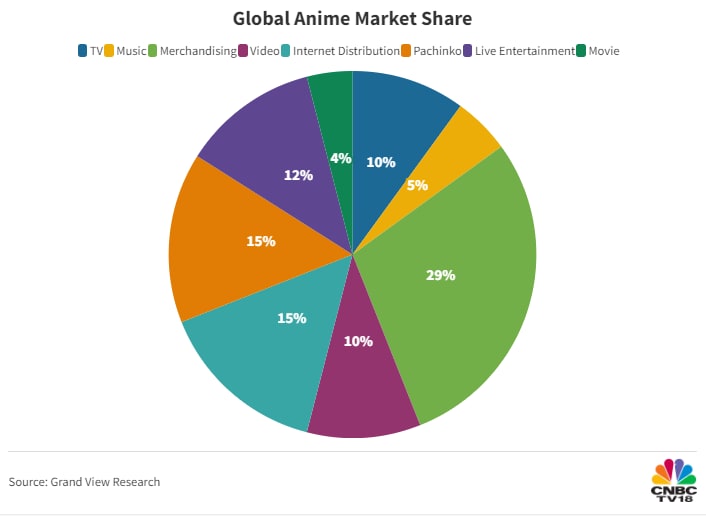
Cosplay ensembles, extravagant toys, banners, keychains, and different things are all essential for the huge inventive and business domain that is manga and anime promoting.
Outfitting the Force of Fan Commitment
Anime and manga are something beyond amusement; they are social peculiarities that encourage compelling profound bonds among devotees. Anime studios and manga distributors comprehend that it is so basic to develop these connections and use them to drive stock achievement.
Since the manga is serialized, it as often as possible creates tension through character improvement and cliffhangers, which draws in a fan following prepared to get memorabilia with their #1 characters and minutes. On the other hand, by its outwardly striking liveliness, infectious music, and drawing in narrating, anime increases crowd commitment and creates a close-to-home reaction that prompts merchandise buys.
Making Convincing Characters and Universes
The enchanting characters and unpredictably made settings that manga and anime portray are central to their allure. Manga is perfect at creating characters and making a universe; it spellbinds watchers with painstakingly thought-out stories that occur across a few sections and volumes.
This profundity fulfills fans’ need to claim substantial bits of their most loved manga universes by empowering manga merchandisers to offer a great many items, from complex puppets to imitation props. Anime distinctively and sonically rejuvenates these universes such that watchers see as very convincing. Open doors for promoting are bountiful since anime studios exploit character notoriety by giving a large number of merchandise, like clothing, extras, and collectibles, empowering fans to submerge themselves in their favored anime series completely.
Embracing Computerized Spaces
Manga and anime have embraced new channels for promoting and commercialization in an undeniably advanced climate. Manga distributers utilize computerized stages to advance things through designated internet promoting and organizations, as well as to give clients simple admittance to selective advanced material and manga sections.
Anime organizations use web-based features to grow their range worldwide and draw in fans with intuitive online entertainment crusades, virtual occasions, and simulcasts. With the assistance of computerized promoting, which incorporates virtual items, online memberships, and downloadable material, manga, and anime fans can now uphold their favored establishments effectively and advantageously while likewise broadening the compass of things past conventional retail channels.
Developing People group and Coordinated effort
A flourishing local area of fans, makers, and colleagues who combine to commend their normal side interests lies at the center of manga and anime stock. Through fan social affairs, shows, and organizations with specialists and powerhouses, manga distributers and anime studios develop this sensation of local area and furnish fans with selective opportunities to interface with the personalities behind their cherished shows.
The compass of manga and anime things is additionally expanded through organizations with style names, toy firms, and amusement organizations. These organizations arrive at new business sectors and socioeconomics and reinforce the social impact of these treasured media.
9. Difficulties of Adjusting Anime to Manga
The most well-known center while examining transformation is the change of composed works into visual medium. However, this single direction road isn’t generally the way in which the excursion goes. Manga creators face a totally different arrangement of deterrents when they move anime programs into manga design. We’ll go profoundly into the perplexing system of making an interpretation of activity into manga in this blog. We will investigate the basic complexities, going from the change from movement to static pictures to its implications on narrating and visual show.
Catching Movement in Quietness
Catching the impression of movement that vivified groupings have and moving it into static visuals is perhaps the greatest test in interpreting anime to manga. Characters in anime progressively move about the screen, and activity scenes occur continuously. In any case, in the manga, specialists need to utilize a grouping of still boards to bring out a similar impression of the development. To safeguard the stream and power of the first liveliness, cautious thought of rhythm, a broad course of action, and visual pieces of information are fundamental.
Passing Feeling on through Symbolism
Narrating requires feeling, and anime regularly utilizes nonverbal signs like non-verbal communication, looks, and ambient sound to recommend the feelings of its characters. Manga makers need to sort out some way to convey similar forces of feeling with simply still pictures while interpreting anime as manga. This can be troublesome because all they need to work with is creation, line work, and concealing to convey the nuances of each person’s sentiments and the temperament of each scene.
Broad activity scenes, dynamic camera points, and lavish set pieces are normal in anime films, all of which improve the general film insight. In any case, to interpret these mind-boggling pictures into manga configuration, reflection and disentanglement should be kept up without compromising effect or clarity. To keep up with the soul of the first liveliness while considering the limitations of the medium, specialists need to painstakingly consider what parts to underline and how to orchestrate them inside the page’s limits.
Keeping up with Consistency with Source Material
Keeping up with respectability with the first being satisfied while adding new viewpoints or creating old ones is one more issue in interpreting anime to manga. To work on the manga variation, makers should track down a harmony between sticking to the first plot, character plans, and feel and integrating their one-of-a-kind imaginative vision. To ensure that the manga transformation feels like a coherent continuation of the anime as opposed to a detached rethinking, this requires an exhaustive understanding of the source material and an intense tender loving care.
Tending to Crowd Assumptions
With regards to variations, crowds oftentimes have assumptions, especially while jumping between various media like manga and anime. To draw in both current fans and new ones, makers should know about these assumptions and attempt to either satisfy or outperform them while additionally giving something one of a kind and enrapturing. To make a manga transformation that requests to perusers and keeps up with the first anime’s substance, a cautious difficult exercise including the rhythm, characters, and visual show is required.
Manga writers can make manga transformations that honor the first anime while giving perusers something new and fascinating by perceiving the specific issues included and handling the variation cycle innovatively and tirelessly.
10. Dynamic Advancement
The course of variation — the change from manga, a static yet outwardly striking narrating design, to anime, a dynamic and engaging movement medium — establishes the groundwork of this relationship. We go profoundly into the complexities of story transformation in this examination, enlightening the troubles and creative decisions that form this extraordinary experience.
Quintessence of Manga Narrating
Manga goes about as the model for anime variations on account of its particular combination of story intricacy and visual class. The unequivocally drawn boards of mangaka (manga specialists) bear the weight of world-building, character improvement, and account. In any case, the shift from manga to anime requires reevaluating this unbending storyline to make a liquid and dynamic structure. Understanding the essentials of manga account uncovers the perplexing organization of sentiments, ways of behaving, and articulations that act as the reason for anime transformations.
Challenges in Interpretation
One of the greatest obstructions in the manga-to-anime transformation process is the change of still pictures into streaming liveliness. A cautious equilibrium should be struck to consolidate development and exuberance without compromising the first craftsmanship’s creativity. Manga boards’ cadence, course of action, and visual pieces of information should be modified to fit the powerful style of movement. It takes a profound understanding of the two media and a craving to try while sticking to the first work to close this hole.
Rejuvenating Manga
The creative choices that give the story life are major to the manga-to-anime change process. All that from voice acting and soundtracks to character plans and liveliness strategies impacts the anime’s general state of mind and atmosphere. Makers might work on the visual scene, uplift close-to-home reverberation, and investigate new narrating aspects by embracing the intrinsic abilities of activity. These creative choices encapsulate anime transformation by finding some kind of harmony between imaginative advancement and steadfastness to the first work.
Influence on Account Design
Story construction and pacing should be reconsidered while going from manga to anime. Manga allows perusers to control the story’s pacing by turning pages, yet anime shows occasions progressively and submerges watchers in a fastidiously arranged series of occasions. Keeping up with story lucidness and crowd inclusion requires a few significant contemplations, for example, changing manga curves into wordy organizations, adding filler episodes, and modifying the booking of significant scenes. These decisions ongoingly affect the adaption, impacting the entire watching experience.
From Idea to Screen
From idea to screen, the anime transformation of manga is a powerful interaction. It begins with a careful assessment of the first work, featuring significant topics, character connections, and visual components. The variation shows some major signs of life through the innovative vision and enthusiasm of its chiefs, artists, essayists, and voice entertainers. Manga’s static pages are given development, feeling, and essentialness by employing trial and error, emphasis, and close meticulousness, bringing about a powerful story experience that excites watchers all over.
Makers give dearest stories of new life through a meticulous course of interpretation, innovativeness, and collaboration. This permits them to charm crowds with vivid narrating that goes past the domain of the creative mind. We honor the persevering history of variation and the groundbreaking force of narrating as we examine the changing connection between manga and anime.

